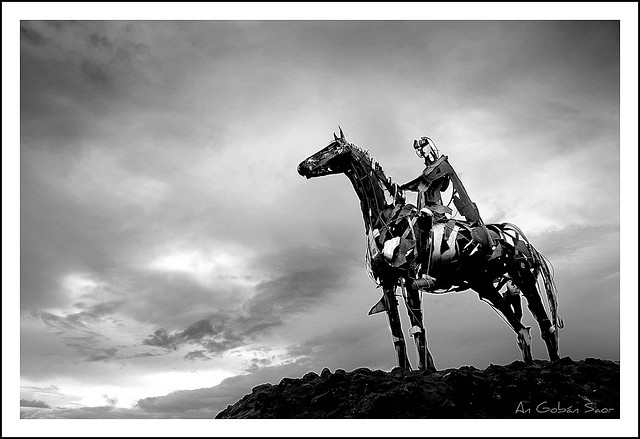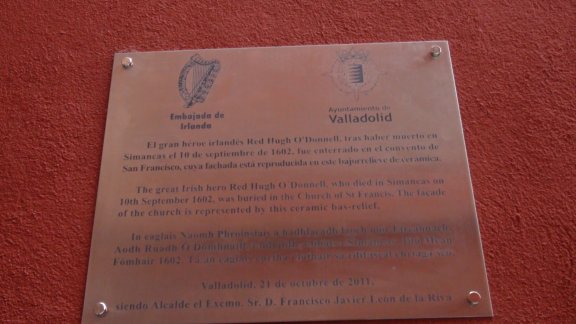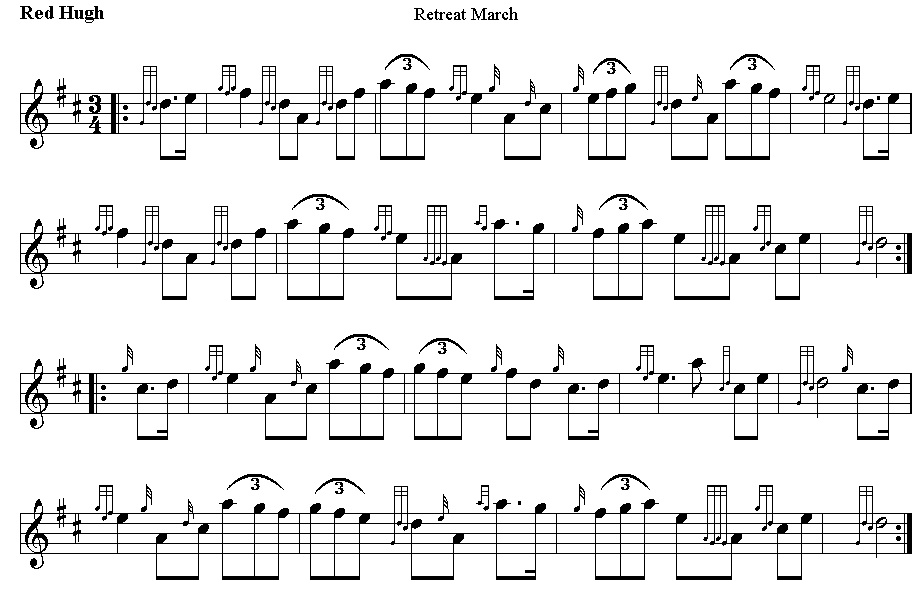|
Aodh Ruadh Ó
Domhnaill,
anglicized as either Hugh Roe O'Donnell or Red Hugh
O'Donnell (1572 – 10 September 1602) was the son of
Ineen Dubh and Hugh O'Donnell, Lord of Tír Chonaill. As
a boy he was fostered by several of the noble houses of
Ulster.
Just before
his fifteenth birthday he was captured by the English
and was taken to Dublin Castle. He was kept prisoner for
four years before he escaped and made his way back to
Donegal, travelling in freezing winter weather. On the
3rd May 1592 he was proclaimed Chieftain O'Domhnaill
(O'Donnell) at the rock of Doon, at Kilmacrennan, County
Donegal.
The
O'Donnells fought in the Nine Years War against the
English with their allies, the Maguires and the O'Neills.
The Battle of Curlew Mountain was one of Red Hugh's
greatest victories. The English were ambushed and
routed while marching through a pass in the Curlew
Mountains, near the town of Boyle, in northwestern
Ireland. The English forces suffered heavy casualties.
Losses by allied Irish forces were not recorded but were
probably minimal. Today the battlefield at Curlew Pass
is overlooked by an impressionistic sculpture by Maurice
Harron called "The Gaelic Chieftain", unveiled in 1999.

In 1601 help
arrived from Spain for the Irish. The Spanish forces
landed in Kinsale and Red Hugh set out on the long
journey to meet them. The English army, led by Lord
Mountjoy, arrived to lay siege to the town and this
resulted in the Battle of Kinsale in December 1601. The
battle was won by the English and the Irish retreated
back to Ulster.
Red Hugh
left Ireland and travelled to Spain to seek help. After
nine months he was struck down by an illness and dies at
the age of thirty; the Irish double-agent, James
"Spanish" Blake, is alleged to have poisoned O'Donnell.
He is buried in a Franciscan monastery in Valladolid,
Spain. Ludhaigh Ó Cléirigh, 17th Century Donegal poet
and historian described his burial:
“His
body was taken to Valladolid, to the King’s Court, in a
four-wheeled hearse, with great numbers of State
Officers, of the Council and of the Royal Guard all
round it, with blazing torches and bright flambeaux of
beautiful waxlights blazing all around on each side of
it. He was buried after that in the chapter of the
monastery of St. Francis with great honour and respect
and in the most solemn manner any Gael ever before had
been interred.”
In 2011,
a plaque commemorating the
death and burial of Red Hugh was unveiled in a side
street off the Plaza.

 |



